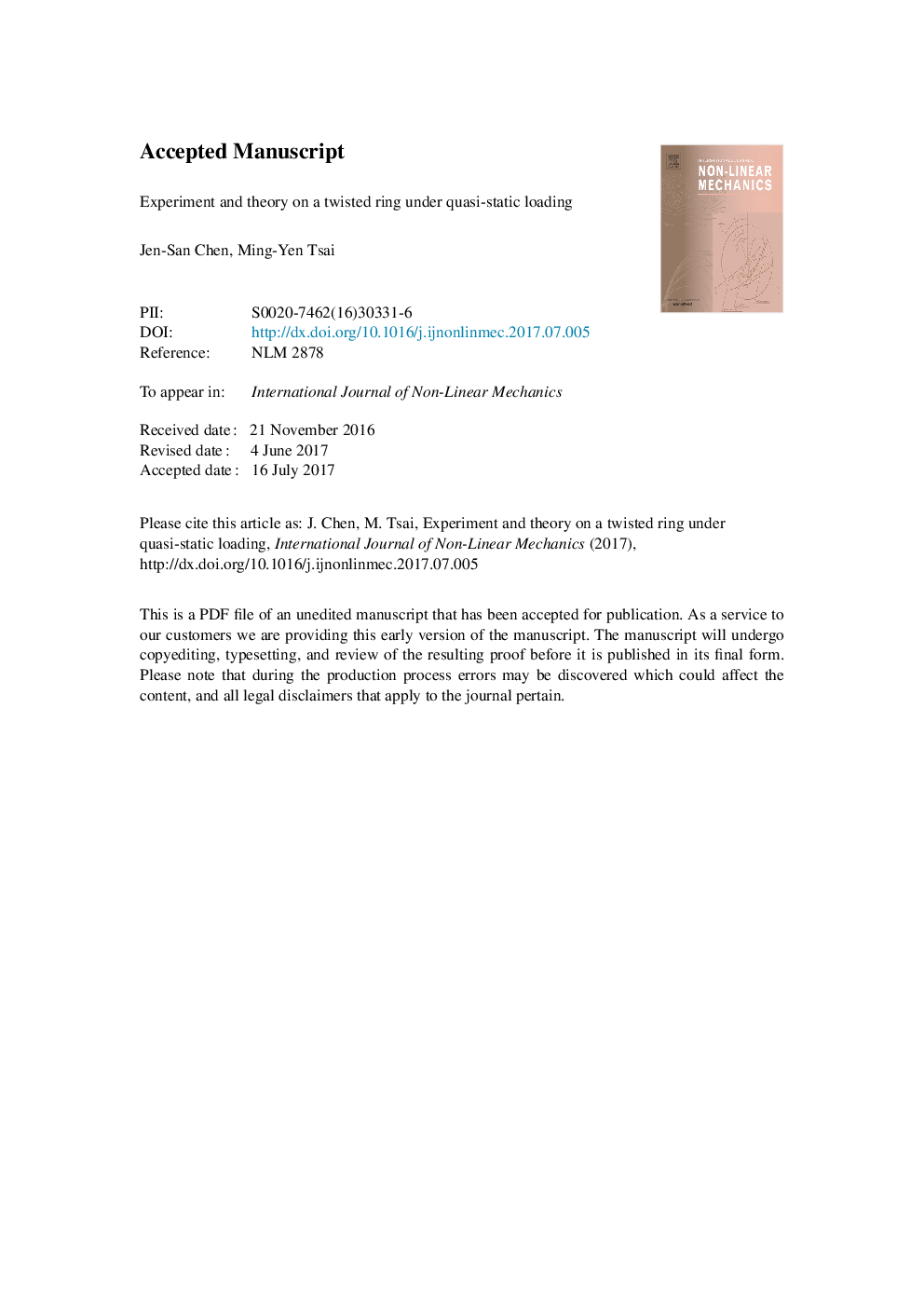| Article ID | Journal | Published Year | Pages | File Type |
|---|---|---|---|---|
| 5016519 | International Journal of Non-Linear Mechanics | 2017 | 33 Pages |
Abstract
Consider an initially straight rod of circular cross section bent into a circular ring so that the cross sections of the two ends meet face to face. In this paper we study, theoretically and experimentally, the behavior of the ring as the relative rotation between the two end cross sections increases quasi-statically. The variables of interest are the relative rotation angle and the corresponding twisting moment. In theoretical aspect the ring is modeled as an elastica and its deformation is calculated by shooting method. It is found that a ring with dimensionless rod radius 0.001 jumps to a two-point self-contact deformation when the relative rotation angle reaches a critical value. As the rotation angle continues to increase, the deformation evolves smoothly to three-point contact and finally to point-line-point contact. In the experiment we build a simple device to control the relative rotation angle between the two end cross sections. Measurements of twisting moment and relative rotation angle are recorded and compared with theoretical prediction. Reasonable agreement between experiment and theory is observed. Especially the jump phenomenon is confirmed. Installation misalignment and plastic deformation of the rod are the main causes of discrepancy between theory and experiment.
Keywords
Related Topics
Physical Sciences and Engineering
Engineering
Mechanical Engineering
Authors
Jen-San Chen, Ming-Yen Tsai,
